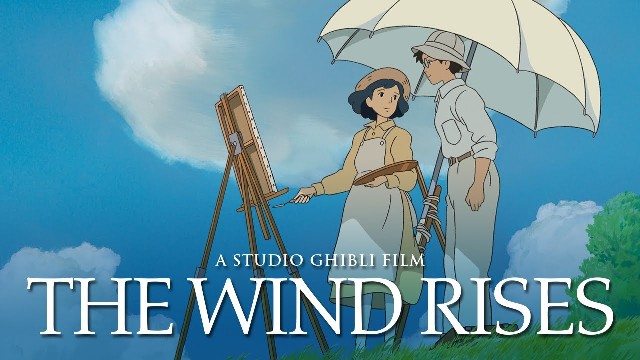The Wind Rises is one of the most compelling, most intelligent, most engaging and most well written and well-structured films I’ve ever seen. If it weren’t for the fact that this film was directed by Hayao “Even my bad movies put the entire history of animated cinema to shame” Miyazaki, I’d say I was surprised that a movie this good can exist. The Wind Rises is not only a great film, it is a great reward for all those who took the journey with Miyazaki-san, a movie that gives us a glimpse into the man’s views on life and the creation and power of art, and serves a perfect endcap to a dynasty in animation that has lasted nearly 40 years, as the last, and possibly best, film of Miyazaki-san’s illustrious career.
The Wind Rises is a biopic story of Jiro Horikoshi, the lead designer of Japan’s infamous World War II era masterpiece of aviation, the A6M Zero, discussing the difficulties he faced when trying to create a plane in a time of Japan when they were behind most of the world in technology, still using wooden planes. The movie shows us Horikoshi’s life, his relationship to friends and family and lovers, and the trials and tribulations he went through in order to eventually come to the point where he could create a powerful plane like the Zero. …..I realize that I may have lost some of you when the words “Japan” and “World War II” were used in the same sentence. Allow me to make something clear- This movie is NOT, and I repeat, NOT a film that glorifies Japan’s actions during WWII in any way. It is not a film that degrades any of the countries fighting in the Allied powers, in fact, there isn’t even anyone in the movie who hails from one of the allied nations. The Wind Rises is actually very critical of the entirety of the governments in the Axis powers. Read: The Governments. The Wind Rises works so well because it is telling the story of the people who had all these amazing ideas of engineering, ideas that could have made the world a much more wonderful place, but they were forced by necessity of resource to do the dirty work of government hounds who wanted to fight yet another pointless war. The Wind Rises sees the war as a bit of a side note, and allows us to experience Horikoshi’s life as he would had experienced it- a job first, and the worrying about the war bearing future later.
Throughout the movie, the audience is delivered a perspective on art that is important to understand. Artists have to deal with the fact that their work is cursed with the fact that people will always have the final perspective on what your piece means, despite the fact that your work was so engrained into your mind and your own vision. The message of that is displayed perfectly with this movie, by showing Horikoshi as an artist through his designing of the airplanes. The cursed existence of his planes are heavily elaborated upon- no matter how beautiful and well-designed his works of aviation might be, they will always be seen as weapons by a government that is too deluded to understand how pointless it is to attack other nations. So what’s an artist to do? Well, work. That’s something that many artists connect to, and as a writer, I totally understand. In the developing stages of your work, you might appreciate what you created as something really good, but when seen by others, it could be seen as anything, but will rarely be seen in the vision you had seen. But that can’t stop you from doing what you love, doing what makes you who you are. This movie was not made to glorify Japan, it was not made to apologize to America, it wasn’t even made for an audience. It was made because Hayao Miyazaki loves making movies, loves being an animator, and that’s something that all artists need to appreciate.
Studio Ghibli movies always have amazing animation. That should be all I need to say. Studio Ghibli is the single greatest animation studio of all time (Come at me, I dare you), and their above and beyond work follows them into The Wind Rises. The animations make the entire movie come off like a lovely dream, characters moving in fluid motions that emulate reality while still giving it the feeling of its own beautiful universe. The character designs are perfect, cartoonish quality mixing perfectly with interpretation of real people. The soundtrack by Joe Hisaishi is quite possibly one of the greatest I’ve ever listened to. It fits the period and setting perfectly, and comes off as a grand, dream like composition that describes the life of these characters and events powerfully. At this point, praising the technical aspects of a Ghibli movie is the equivalent of pointing out in an essay about the earth that grass is green and the sky is blue. Simple fact is, nobody does this better than Ghibli, and I doubt anyone will for a long time.
Go see the Wind Rises. That’s all I can say to sum this all up. Go see it. The movie certainly has a few flaws, it can drag a bit, and it could be difficult for people to connect with the jargon of plane design, but overall it’s another masterpiece in what may be the one of the greatest careers in film history. Miyazaki-san, thank you for years of entertainment, and the inspiration I needed to become a writer, the inspiration I needed to truly learn to love film.
Final Rank: A+
+Another masterpiece of writing, animation and drama by the legendary Hayao Miyazaki
-The final masterpiece of writing, animation and drama by the legendary Hayao

Comments are closed